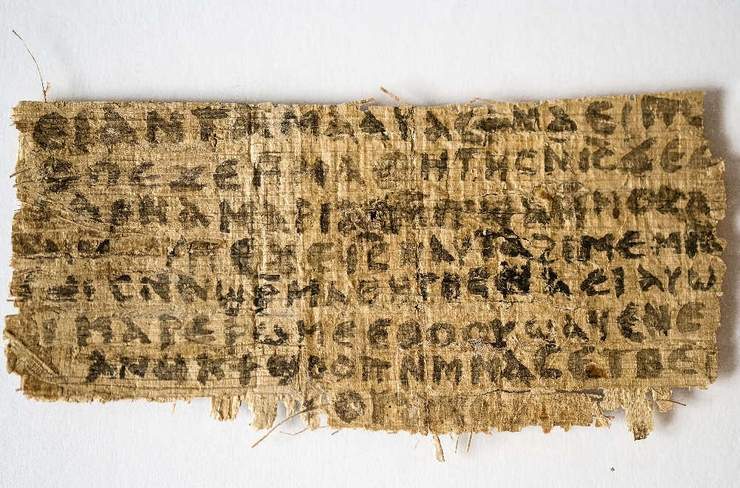Holy Cross Prof: Jesus" Marital Status Needs More Study
By Bronislaus B. Kush
Historians and religious scholars said they are intrigued about the discovery of an ancient Egyptian document suggesting that Jesus Christ had a spouse, but they stressed that the faded, fourth century piece of papyrus doesn't provide conclusive proof that the rabbi from Nazareth had been married. “This is a fascinating find but there are a lot of questions that need to be answered before one can definitely say that Jesus was married,” said Virginia C. Raguin, a professor of art history at the College of the Holy Cross. On Monday, Karen L. King, a historian of early Christianity at the Harvard Divinity School, announced that she had in her possession a fragment of papyrus written in Coptic with the words: “Jesus said to them, 'My wife. . .' ” The eight-lined fragment — smaller than a business card — further states, “She will be my disciple.” The revelation by Ms. King, Harvard's Hollis Professor of Divinity, caused a buzz in the academic world and reignited debates that go back to the early days of Christianity about whether or not Jesus was married. The discussion is particularly passionate in the Roman Catholic Church, where the leadership at the Vatican insists that women and married men cannot become priests because of the model set by Jesus. In the four canonical gospels, written by Matthew, Mark, Luke and John, there is no reference to a wife or children of Jesus. But many researchers said they would not be surprised if Jesus were married, given how important family life was in the ancient world. Alice L. Laffey, an associate professor in the Religious Studies program at Holy Cross, said that Ms. King is a noted scholar, who would not have made the discovery of the papyrus public unless she had some substantiation of its authenticity. “This is something that you don't do lightly,” Ms. Laffey said. Ms. King, 58, is an expert in Coptic writings and has written books on women in antiquity, the so-called Gospels of Judas and Mary Magdalene, and Gnosticism — the set of spiritual practices and religious beliefs found among some groups of early Christians. According to published reports, Ms. King had shown the fragment to experts in papyrology and Coptic linguistics and they had concluded that the piece of paper was not a forgery. The document had been given to Ms. King by an anonymous collector of Middle Eastern papyri. Ms. Laffey stressed that the document could very well be authentic but added that the particular wording might not necessarily mean that Jesus was married. She said that the Egyptian community from which the fragment evolved might have imagined or actually believed that Jesus was married. Ms. Laffey added that the Coptic word “wife” might have a number of meanings and might not necessarily refer to a spouse. “We have to be very, very cautious,” she said. Coptic is an Egyptian dialect that utilizes Greek lettering. Ms. Raguin said the document needs to be tested to validate its authenticity and to date it. Presumably, researchers would carbon-date the fragment or use a spectrograph, which measures the light waves emitted by objects, to analyze it. Raymond L. Delisle, a spokesman for the Diocese of Worcester, said the debate about a married Jesus has raged for years. “The Bible is a living tradition that's continually being studied by scholars,” he said, noting a lot of early church history was passed down orally for generations before being transcribed. He said he's hoping discussion about the finding will pique interest in the Scriptures. “There's no question that this discovery is going to get a lot of vetting,” he said. “It appears that a lot more work needs to be done.”
|
.
Any original material on these pages is copyright © BishopAccountability.org 2004. Reproduce freely with attribution.
